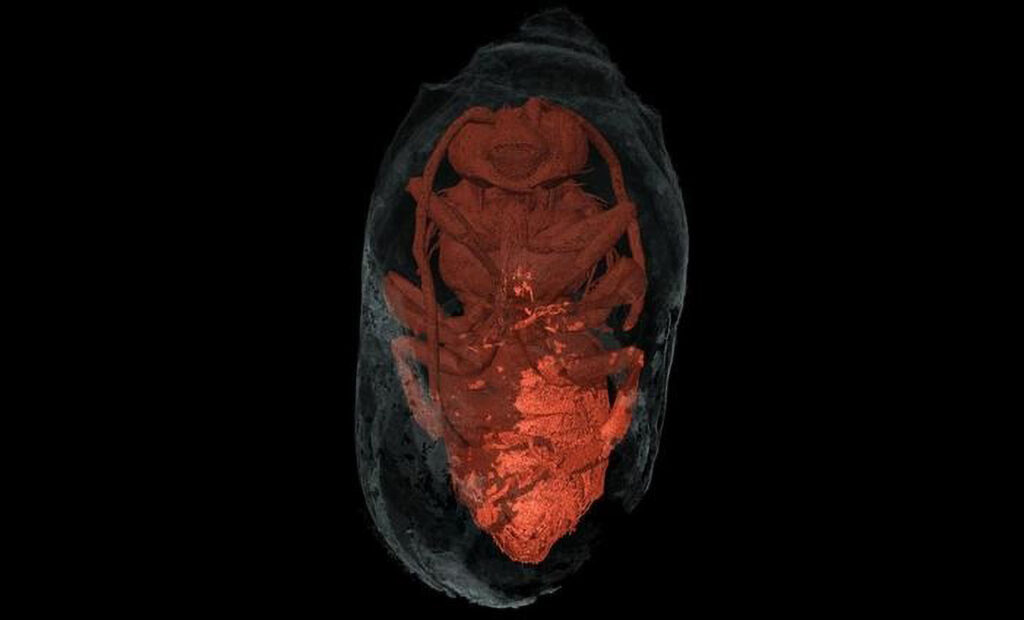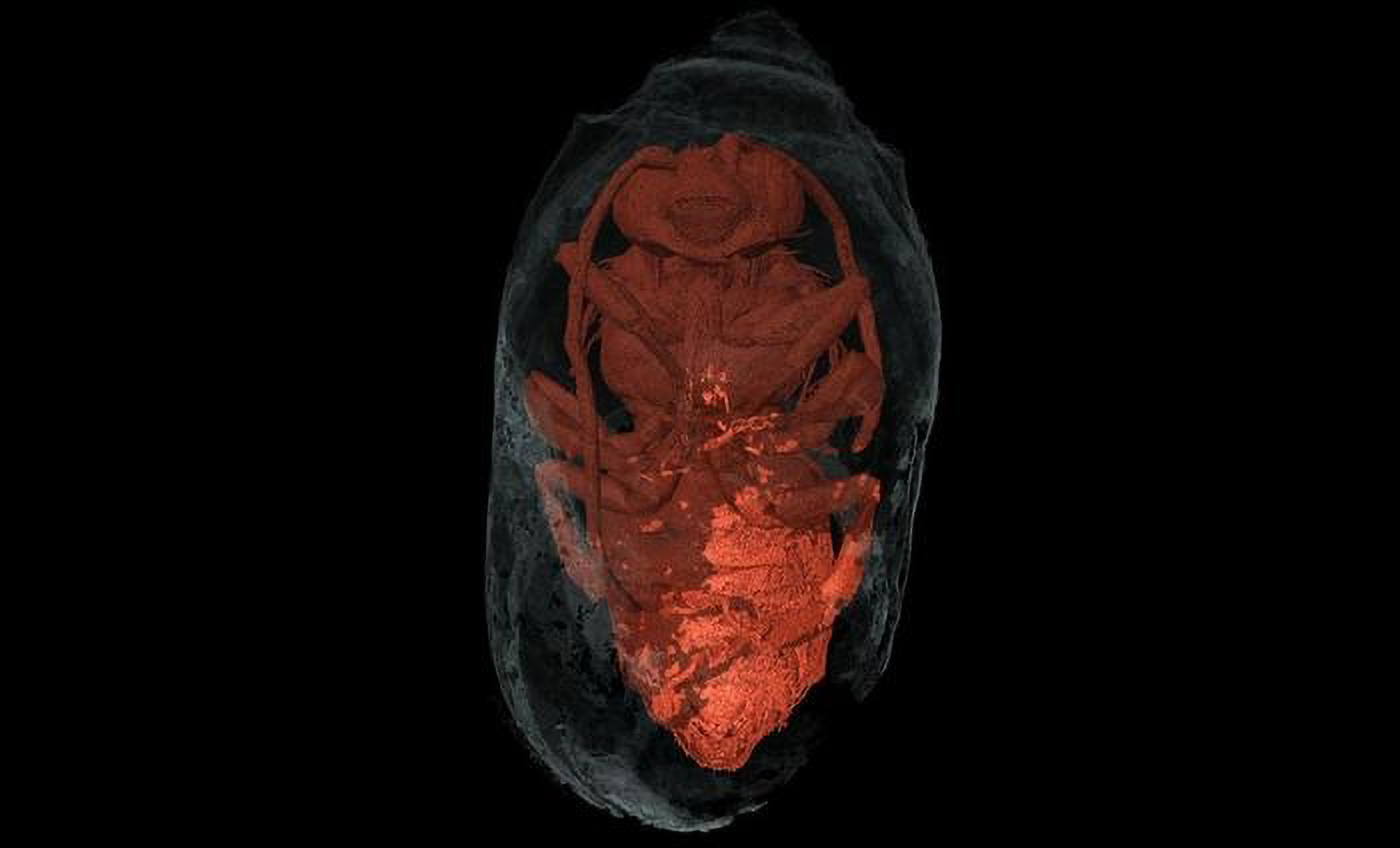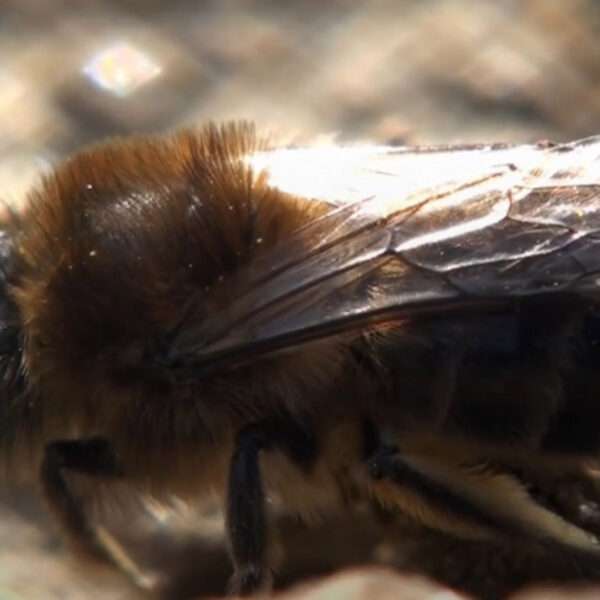Scientists hope to find out more about bees’ survival strategies after discovering 3,000-year-old mummified solitary bee larvae in Portugal.
Researchers from Lisbon and Seville said the bees, which were ready to leave their cells, had been “in an exceptional state of conservation.”
Solitary bees are still an essential element of the ecosystem. They do not produce honey. However, the thousands of undomesticated species that exist in the world are busy pollinators.

Seville University‘s Prof Fernando Muniz explained that finding insects in such an excellent state of fossilisation would be an “extremely rare” occasion as their skeletons usually decompose quickly.
The Spanish expert on mineralogy and agricultural chemistry revealed that his team also detected pollen in the bee cells.
The discovery, which was made in southwestern Portugal, reportedly represents a “unique opportunity” to examine the well-conserved architecture of the nesting sites in greater detail to establish the environmental causes that led to the insects’ death.
The experts from Lisbon University and the University of Seville explained that the area where the discovery had been made had experienced cold periods with intense wintertime rainfall. The time span is known as the Neoglacial interval.
Carlos Neto de Carvalho is a geologist at Lisbon University’s Faculty of Sciences.
He told NewsX: “Around 3,000 years ago, we were living in the so-called Neoglacial period which was in general the return of cool and moist conditions from the warming of the Holocene period.
“This cooling event was accompanied by increased precipitation and moisture which helped in the renovation of the glaciers that had not existed or have greatly receded since the last ice age.”
Carlos explained that the glaciers in the mountains of Portugal had disappeared around 14,000 years ago.
Speaking about human activity at the time the discovered mummified bee larvae had lived, he said: “We were living in the so-called Bronze Age in this part of Europe. This period was dominated by an extensive occupation of the good soils by farming and grazing activities as well as the deforestation of large areas.”
The researcher emphasised that this had a profound effect on the conditions.
Carlos explained: “Cutting trees to make way for crops changed the climate. During this period, winters were definitely cooler and wetter than they are today.
“The summers could have been up to 1.5 degrees centigrade warmer though, according to a recently published paper.
The Lisbon University scientist said he and his colleagues were uncertain about why the bee cells had been preserved in such a remarkable state.
He told NewsX: “Hundreds of bees preserved in their brood nests just before exiting means that something catastrophic happened for them at what is now the sunny coast of Portugal.”
Carlos added: “We assume that either a sudden drop to freezing temperatures or the prolongment of the flooding period in that early spring, eventually with the deposition of fine sediments that smothered the nesting area, may have been responsible for the massive death at the soil level.”
The geologist said the bacterial activity could cause a fast decay of organic tissue.
He said: “The exoskeleton of bees and insects in general is made of chitin, a cellulose-like biopolymer that decomposes quickly after the animal dies.
“If this does not happen, this is because something extraordinary happened in the environment to reduce the activity of bacteria to zero.
“Usually, we find the preservation of insects in extraordinary situations such as the famous preservation in amber or copal, natural resins seeped out from trees.”
But Carlos underlined: “In very specific situations, fossils of insects can be found in fine-grained sediments.”
The scientist concluded: “Discovering and interpreting the ecological reasons for the presence of this population of bees and why they died and were mummified 3,000 years ago may help us to understand and establish strategies for resilience in the face of climate change, such as comparing the ecological imbalances caused by natural parameters and the current ones and the way in which they are affecting the bee species of today.”











